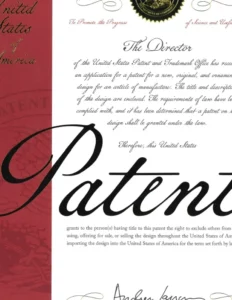상표법 : 미국 상표 등록의 7가지 장점
Recently, the ‘2015 Global 500 Annual Report’ by Brand Finance of the UK was released, revealing the brand value rankings of global companies. How many places did Samsung Electronics, a global company representing Korea, compete with world-class companies? This year, Samsung Electronics surpassed Google and Microsoft with a brand value of about 90 trillion won ($81.7 billion), ranking second in the world after Apple.
Today, we are going to talk about trademarks, which are roughly synonymous with brands, and the US trademark law that is necessary to manage them.
A trademark is a name, term, sign, symbol, or a combination thereof to identify products and services and distinguish them from competitors. Developing, maintaining and protecting them has also long been an important task for companies and enterprises. Trademarks are estimated to account for more than 30% of the total corporate value on average, and the global top 10 companies such as Google, Microsoft, McDonald’s and Coca-Cola are valued in the tens of trillions of dollars, and the impact on customers is unimaginable. transcend. Developing, maintaining and protecting your brand is an important investment that gives consumers strong trust, builds loyalty, and drives sales.
Applying for trademark registration is less time consuming and less expensive than filing for registration of other intellectual property rights such as patents. Even if the trademark is not currently in use in the United States, it is possible to apply based on a trademark that will be used in the future or a trademark that has already been applied for or registered in another country. There are many advantages to registering a trademark in the United States, but here are some representative ones.
1. Trademarks registered with the U.S. Patent and Trademark Office are treated as being used throughout the United States, providing more comprehensive rights as opposed to unregistered trademark rights that may be limited to the reputation of a specific region or local residents. you will be acknowledged.
2. When a trademark is registered, it notifies the ownership of the trademark throughout the United States, imposes restrictions on the use of other users after the registration date, and can search for the possibility of trademark use, thereby preventing the use of similar trademarks by other companies. do.
3. Registered trademarks may use the ® symbol instead of the TM notation to inform other companies and consumers about trademark rights.
4. After registration, registration of similar trademarks with the Patent and Trademark Office is restricted.
5. You can sue the infringer in federal court and, in some cases, claim triple damages and up to attorney’s fees.
6. Registration with the US Patent and Trademark Office may be used as a basis for foreign trademark registrations.
7. By filing with US Customs and Border Protection, you can take steps to prevent counterfeit or trademark-infringing products from being imported.
As the timing and method of trademark registration application differs depending on the trademark and the circumstances of each company, we recommend that you seek professional advice if you are considering applying for trademark registration.
If you have any additional questions related to the Intellectual Property Act, or if you have any legal matters you would like to know about, please contact us at mail@songlawfirm.com. I will reflect that in my next column.